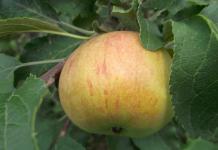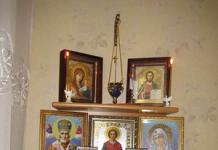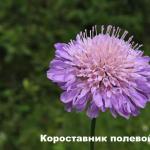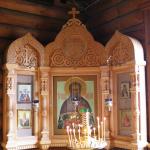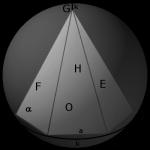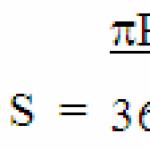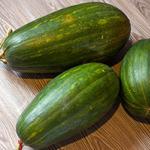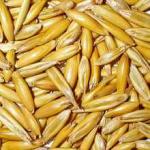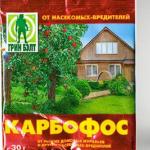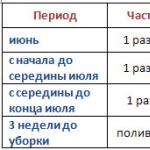Prayers help to survive grief and illness. After the era of communism, people lost many centuries of knowledge and now those who have returned to faith need knowledge. Images of saints are intended not only to decorate a home, their purpose is to protect and protect. To do this, you need to know where the icons should be in the apartment.
Why are icons needed in the house?
In the frantic pace of modern life, not everyone has time to attend church services every day or even every week. In defense and God's help a person needs every minute. This is possible thanks to the correct placement of the home iconostasis for prayer. How to arrange icons correctly matters more than their number.
The size of the image also does not matter. For a deeply religious person, the faces of saints are the material embodiment of the Divine image. Icons are very different from photographs and portraits. They reflect peace, serenity, kindness, compassion, purity in every stroke.
Faces of saints in the home iconostasis
An icon is a window into house of God, and the shrine is the place where the day of a true believer begins and ends. An Orthodox Christian's home must have an icon of Jesus Christ and a prayer cross. The rest of the images are chosen based on personal needs and desires.
How to choose the right place for red corner in the apartment to maintain the aura and tune in to prayer - necessary information for every believer. If the layout allows, then it is advisable to highlight the south-eastern corner of the room; access should be free and not cluttered. It is customary to pray facing the rising sun. It is important to know how to properly hang icons in an apartment, observing the accepted hierarchy:
- There should always be an icon of the Savior in the center. Above it can only be the cross and the Holy Trinity (Father, Son and Holy Spirit).
- You need to place the face of the Blessed Virgin Mary on the right, then place her other images a little to the side.
- On the left is the obligatory holy image of John the Baptist.
 Particular attention is paid. It is believed that if you hang it over front door, then it will protect those entering the house from bad intentions, protect them from quarrels and scandals. And opposite the entrance, the Holy Trinity should be placed to cleanse the guest’s bad thoughts.
Particular attention is paid. It is believed that if you hang it over front door, then it will protect those entering the house from bad intentions, protect them from quarrels and scandals. And opposite the entrance, the Holy Trinity should be placed to cleanse the guest’s bad thoughts.
The iconostasis can be made from one shelf, side table or just hang on the wall. It is allowed to decorate the holy corner with fresh flowers, towels, candles and lamps. It is also advisable to place each face on a festive napkin. First of all, it should be remembered that the most important thing in prayer is its sincerity and faith in God. It is important not only to beautifully decorate the interior of the “front corner”.
Shelf with holy images in the kitchen
It is helpful to place faces of saints in the kitchen. Prayer before meals should be an integral part of life. Gratitude for food and prosperity to the Lord God is natural for a Christian. You should take care that dirt and kitchen grease do not get on the icon; it is better to put it behind glass in a cabinet or place it on a shelf on the wall, which is located opposite the stove. You can place an image of the Last Supper, which will correspond to the theme.
Guardian angel in the children's room
When there are many children in a family or one - this is always joy and blessing. The icon of the Mother of God at the head of the baby’s bed in the bedroom will protect his sleep and calm him down. The face of a guardian angel, whose name a person is named at baptism, will always help in life. Depending on the gender and age of the child, the following images are suitable:
- For a girl - or Matrona of Moscow. They help you find happiness, escape loneliness and get married successfully.
- For a boy - an image of St. George the Victorious for protection and giving courage. The icon of St. Andrew the Primordial will teach you to be polite to elders and promotes the development of the mind. The image of Alexander Nevsky will patronize athletes and the military.
How not to place the faces of saints
Do it right home iconostasis, remove inappropriate objects from the environment - this is what a true Christian should do. There are no canons prohibiting hanging an image of a saint in front of a mirror, but priests do not recommend doing this in order not to be distracted from prayer. To preserve the power of images, church ministers do not recommend:

 Church ministers have different opinions about whether it is possible to sleep with your feet facing an icon. But, in general, there is nothing wrong with this if it is not done for the sake of blasphemy. This will only give another reason, looking at the face of the saint, to pray.
Church ministers have different opinions about whether it is possible to sleep with your feet facing an icon. But, in general, there is nothing wrong with this if it is not done for the sake of blasphemy. This will only give another reason, looking at the face of the saint, to pray.
How many images are in the house does not matter as much as the order in which they are placed. An icon prayed over for decades, passed down from generation to generation, is a real heirloom for the family. It must be protected and carefully cleaned from dust. Where icons should be located in the house is a very serious question, and it should be approached carefully. Peace of mind the family largely depends on this. The holy image is not just a beautiful picture, it is the face of a man who once lived on earth and remained devoted to God. Every icon is designed to guide you on the right path, to attune your feelings to humility and prayer.
An icon is not just an image of saints - it is a symbol of faith, goodness and purity. Since ancient times, icons have been found not only in temples and churches, but also in people's homes. Few people know how to correctly place icons in a house or apartment so that they serve as a talisman for their owners. For believers, the presence of God's face plays a huge role.
As in the church, so in the house, icons should occupy the most honorable place in the room. In the modern world, the location of icons is not given much importance and this is not correct. After all, what could be more beautiful after communicating with God in church, to feel his presence at home, to feel protected, to gain strength and faith in the future.
Place for placing icons
The power of any icon is immeasurable. Often people do not pay attention to objects located next to icons, which can affect their strength. Many things located next to the icons, for example photographs, various interior items carrying negative energy, prevent the icons from revealing their full power. It is prohibited to place icons with objects not related to the church, such as detective books and other things. The right place for icons is a way to fully reveal the power of the icon and direct it to protect the house and its inhabitants.
For many centuries there has been a place in the house that is intended specifically for icons. This is the corner of the room facing east. Previously, such a place was given the name “red corner”. There was a tradition in Rus': everyone who came to the house first of all had to bow to the icon, and then they could turn to the owners. Often, next to the icons there was a small table or shelf on which candles and holy water could be seen. Next to the icons was hung a lamp in which a fire burned around the clock, as a symbol of veneration of the saints. The censer played a significant role, with which they approached all corners of the house, thereby expelling all negativity from the room.
It will be difficult to create a “red corner” in modern apartments, but the home of a believer should not be without icons. In a modern apartment, you can place the icon on top of the front door. This arrangement will serve as a talisman for the home from people who wish harm to the homeowners.
The location of the icons at the head of the bed is considered significant; this will be especially important for young children. Placed the faces of saints at the head will help the child to be calm, not to experience fears and will provide protection from bad dreams.
Icons can also be placed in the kitchen above the dining table. With this action, your meals will be blessed and beneficial. It will be beneficial for household members and guests to read a prayer before each feast.
Incorrect placement of icons
You should not place icons near electrical appliances or sockets. The forces of electric current, invisible to the human eye, can negatively affect them and prevent them from showing their strength.
It is strictly forbidden to place icons near pagan souvenirs and various figurines; this cannot be acceptable for a believer. Just as it is unacceptable to equate holy icons with objects intended for interior decoration. And the very placement of figurines of various idols in housing can negatively affect the life and health of people living in such a room.
Placing icons next to photographs or other images of people is not acceptable. Thus, when you pray to an icon, you deify the image located nearby.
The image of the icon itself must be painted by a believer. Such an icon will bring joy and prosperity to the family, protecting and protecting it from various adversities. You should purchase an icon knowing its history. Icons that are not given with all my heart can bring harm, rather than benefit, to the people who have them.
You should not block the icons with various objects, thus blocking the power that can protect the owners.
Correct placement of icons
Icons can be placed in any room except the bath and toilet. Placing icons in rooms intended for personal hygiene is not advisable.
The main goal in placing an icon is to place or hang it so that the faces of the saints are visible from all sides of the room.
Icons should hang straight and not skewed. If the layout of the apartment allows you to select a corner where icons can be located, purchase special shelves on which you can place the images.
The icons should be arranged in this order: the icon of the Savior is placed in the center, on the right side is the icon of the Most Holy Theotokos, and to the left of it is John the Baptist. Then you can put other icons. Above the icon of the Savior, other icons should not be located.
It is permissible to place a crucifix, holy water, church candles and incense next to the icons. Before reading the prayers, it would be correct to light a church candle and burn incense in front of the images.
In order for the icons to reveal their power, do not forget to read prayers in front of them, addressing the holy martyrs.
The correct placement of icons in the house will help to avoid numerous life problems, will become a talisman for the whole family, and every prayer and request will be heard.
Information about the meaning and bestowing help of various icons of the Orthodox Church.
From time to time, fashion for various interior details changes, but the constant rule for true believers remains the presence of Holy Images in their homes.
Where and how to hang an icon correctly in an apartment, house, on which side, in which corner: rules for placing icons in an apartment, house according to Orthodox laws
According to primordial church canons, it is prescribed to place the images in the eastern zone of the room. Currently, the requirements have been relaxed - it is not prohibited to keep them in any convenient place. However, there are basic rules:
- The religious content of the icon does not allow proximity to secular paintings or books of dubious content.
- Close proximity of shrines to televisions and computers is not permitted. These items interfere with spiritual reflection and prayer.
- The presence of icons is intended for communication with the Lord. The prayer is read in solitude. This means that the image should be placed in a place where all family members can freely fit without interfering with each other.
- The holy corner must be kept perfectly clean. Give him a place accessible for timely cleaning.
- The images are incompatible with everyday photographs, talismans and other household items on the shelf.
- You cannot install photographs of deceased monks and elders next to Christian images. They must be kept separate from the holy face and placed in other compartments.
In addition, icons must be placed in accordance with a certain hierarchy:
- The faces of the Mother of God and the Savior are placed in the central place
- The icon of the Holy Trinity is hung above the image of the Lord Pantocrator and the faces of the Mother of God (Vladimir, Yaroslavl, Kazan, Smolensk).
- The last two icons should not be placed higher than the others. It is enough to place them at the same level, but not lower.
- Named ones are hung on both sides of the main images. In the absence of these, they put up icons of saints revered in the family circle. In most cases, this is the face of St. Nicholas the Wonderworker.
What icon is hung above the front door, opposite the front door, in the kitchen?
- First of all, consecrate your home before hanging holy images in it
- As already mentioned, icons can be placed in a free direction, in any room, including the kitchen
- But there are some preferences:
- It is customary to hang a cross above the entrance to an apartment.
- It is recommended to place an icon of the Seven Shore Mother of God opposite the door
- Hang it in the kitchen - The Last Supper
Is it possible to hang icons, wedding icons in the bedroom, above the bed?
- It is not prohibited to place the image at the head of the bed
Is it possible to hang icons in front of a mirror?
- Apart from those discussed above, there are no requirements for the placement of holy images in social life, including no prohibitions on the reflection of icons in a mirror.
- This sinful superstition has nothing to do with the Orthodox Church.
Icon of the Seven Shots of the Mother of God: meaning, how it helps, where to hang it in a house or apartment?
- The grieving heart, depicted by the Mother of God with arrows signifying sins from which the laity are in no hurry to free themselves, is tormented by pain for us.
- A legendary icon capable of healing from a deadly disease.
- The most powerful energy of the image makes it possible to resolve the most severe sorrows and defeat evil spirits.
- The Holy Face discharges complex family relationships, filling them with a positive charge.
Prayer of the Holy Virgin in question:
- Helps with splits within family relationships
- Relieves irritation and rejection of loved ones
- In case of prolonged depression, it clears away bad thoughts
- Protects from robbers and terrible envious people
For upcoming important matters, she should always be with her.
- The icon placed opposite the entrance provides enormous protection. Everyone who enters the house stumbles upon the gaze of the Mother of God - bad thoughts remain outside
What icon is hung opposite the Seven Arrow Icon?
- It is recommended to install the Ostrobramskaya icon above the entrance, and the Seven-Arrow icon opposite the entrance opening. The uninvited guest finds himself in the isolation created by both shrines.
Ostrobramskaya Icon of the Mother of God, Theotokos: meaning, how it helps, where to hang it in a house or apartment?


- Crossed arms and a head tilted down, depicted on the miraculous icon, are a symbol of acceptance of the Holy News.
- Contributes to help:
- Getting rid of infertility
- Return of stolen children
- Searching for missing people
- The miraculous face is appropriate in a comfortable area of the living room for viewing and prayers.
Icon of the Guardian Angel: meaning, how it helps, where to hang it in a house or apartment?
- One of the most sought after faces
- A Guardian Angel is selected in accordance with Orthodox rules
- His image is protection for a specific person
- The Holy Protector responds to any help to those who turn to him in holy prayer
- It's different for everyone. Some are looking for healing, others are looking for love, and others are looking for salvation from their sins.
- There are no special canons for placement in a home, as in most other cases.
Icon of the Last Supper: meaning, what helps, where to hang it in a house or apartment?


- It is difficult to find a person who is not familiar with this icon. Orthodox Christians turn to it when visiting church; for the common man, it is available for viewing in a fresco by Leonardo da Vinci.
- The main idea of the icon is the acceptance of Christ’s sacrifice passed through the soul and unity with him, Orthodox Christians. After all, the biblical story depicted describes the last day of Jesus, shortly before his crucifixion.
- Appeal to this holy image:
- Makes it possible to remove a heavy stone from the soul from the difficulties that have piled up, through communication with God
- Blesses the cooking process
- Allows you to express gratitude to the Lord for the gift of food
- Grants repentance for major sins
- The icon, actively revered by parishioners, is placed in the hierarchy above the faces of the Most Holy Theotokos and the Savior
- Where in the apartment to install it is not so important, but it is preferable to hang it in the kitchen or dining room.
Icon of the Unbreakable Wall: meaning, how it helps, where to hang it in a house or apartment?


- It was named due to its integrity for over eight hundred and 800 years, despite the numerous damage to the St. Sophia Cathedral, which is its abode.
- Like a mountain separates the one who prays and the evil coming towards him.
- The most revered relic among Christians is most consistent with the entrance to the home or the location opposite it.
Icon of the Bread Spreader: meaning, how it helps, where to hang it in a house or apartment?


Father Ambrose doomed the holy painting with this name. The meaning put into the name by the hieromonk is the desire to explain to people that the Holy Virgin helps not only in spiritual matters, but also takes care of everyday matters.
One should turn in prayer to the Mother of God, Spreader of the Loaves:
- Protect the crop from natural disasters: fire, drought, hail, rain, severe frosts
- Prepare especially delicious food
- Receive a blessing for a successful business
- Have harmonious family relationships
- Protect your surroundings from sorrows and misfortunes
Place the shrine in an area that is comfortable for the whole family—there are no strict rules about location in a home environment.
Icon of the Holy Trinity: meaning, what helps, where to hang it in a house or apartment?


- The depicted Angels convey a special meaning. They show the possibility of a strong connection between people and the Lord, provided there is sincere service to him.
- A plea for help to an icon is most often sent to:
- In difficult moments of life's trials, in order to find the right path
- The face will help you to see the desired and necessary ray of hope, and will take away the depressing experiences
- To solve numerous problems
- For cleansing from committed sins or existing negative states, mainly at confession
- Place the image in society according to general rules, preferably in the east of the living space
- Hang at the head of the bed for protection.
Icon with the crucifixion of Christ: meaning, what helps, where to hang it in a house or apartment?


- This guise is a symbol of the connecting link between Divine and worldly existence. It is a virginally pure sign of the faith of all Christians.
- Before the hypostasis of the Lord they fall on their knees with prayer:
- On the healing of serious spiritual and physical illnesses
- About participation and calm in all kinds of disasters
- About direction on the right path when solving an important issue
- About support during difficult periods of life
The holy face of Jesus Christ is in the house:
- Helps and protects from any influence of evil spirits, from dishonest and evil persons
- Gives peace in home and family
- Light the icon before placing it in your home. The power of the image is incredible. The face of the Lord must necessarily be in the worldly home of a believer.
- Place it in a place of honor in the living space and allocate a dominant place.
Icon of Unfading Color: meaning, how it helps, where to hang it in a house or apartment?


- A beautiful, miraculous icon is considered a sign of an immaculate virgin. The white lily places special emphasis on the purity of the Unbride Bride.
- The soft and gentle features of the Queen of Heaven from one glance at her bring peace and tranquility to the soul.
- Prayer to the image:
- Gives strength, guides along the righteous path
- Helps preserve beauty and youth
- Promotes understanding when people communicate with each other
- Helps in establishing family relationships
- Enables desperate spouses to preserve their love
- Eliminates temptations that appear in the family camp
- Fills those who despair with confidence and hope for the future
- Frees the supplicant from unbearable and grave doubts
- Very often, unmarried girls turn to the Most Pure One, asking for the right choice of a life partner. Sincere prayer grants wish fulfillment
- The icon is considered a true helper of women, but does not refuse help to men either.
- There are numerous cases of healing of children with speech problems. There was a child who completely got rid of muteness after visiting the temple and praying to his parents before the image.
- The Shrine helps female believers who sincerely ask: to endow their marriage with happiness and to save the integrity of the family
- Place the image in a convenient corner for prayer reading
Each Holy Face bestows the power and stronghold of the Lord. But this does not mean that, having hung all the walls with miraculous faces, everything in your life will become surprisingly beautiful. No! Without true faith and a sincere state of prayer, not a single icon, even the most powerful one, will help.
Video: Where should icons be located in the house?
The traditional place in the house where icons are located is the red (beautiful) corner, so that they are visible as soon as a person crosses the threshold of the house. Usually this was the far corner of the room, diagonally from the front door.
Previously, in every Orthodox home, icons were placed in a special cabinet (shrine) or on a shelf. Items consecrated in the church were also kept here: holy water, willow, and Easter egg. Family members prayed in front of the images, lighting a lamp. And when there was a festive feast in the house, the most honored guest was usually seated closer to the holy images.
In wealthy families (merchants, nobles), entire rooms were set aside for prayer, which were called “cross rooms.” In them, icons were located not only in the red corner, but also on the walls.
How to arrange a red corner in a modern apartment?
In a city apartment, icons should be placed in such a way that when someone enters the room, their gaze first falls on the holy images. In addition, there is a custom to place the red corner on the eastern side of the room. It is easy to define - this is the side where the sun rises. The fact is that the altars of Orthodox churches are located to the east, and believers in the church pray, facing east.
If there is no free corner or convenient part of the wall, then the icons can be placed on a bookshelf (but not adjacent to secular literature), a chest of drawers, a low sideboard, or a piano.
Where is it unacceptable to place icons?
The proximity of icons to posters, wall calendars, figurines and various decorative elements is unacceptable.
According to the priest, this not only reduces the importance of venerating sacred images to an unacceptable level, but also puts holy icons on a par with the idols of the modern world.
Many priests also pay attention to the fact that icons should be placed as far as possible from the TV.
In what order should the icons be placed in the red corner?
The central place in the home iconostasis should be occupied by the image of the Savior. Above this icon you can only place the Crucifixion or the image of the Holy Trinity. To the right of the image of the Savior (at the right hand of the Savior) it is appropriate to place an icon of the Mother of God. To the left of the icon of Jesus Christ is usually placed either the image of St. John the Baptist or the icon of St. Nicholas the Wonderworker.
The remaining icons are placed either on both sides or below. Often these are images of saints who are patrons of family members, and those saints to whom the owners of the house especially often turn in prayer.
Do you need icons in every room?
If you have arranged a red corner in one of the rooms, this does not negate the need for images in other rooms of the apartment. The icon can be hung in the children's room so that the child can pray to the Almighty, in the kitchen so that family members can pray before the meal, and also in the hallway so that, when leaving the house, they can pray to God and ask for His help and blessing.
Valeria Protasova
Reading time: 6 minutes
A A
As every believer knows, an icon is not a beautiful picture or a tribute to fashion, but an Image of God, saints or the Mother of God. Icons are images without authorship through which we pray, but not decorative elements. Accordingly, the free use of icons is disrespect both for Christian traditions and for oneself.
What icons should be in your home, and how exactly should they be placed according to church canons?
What icons should you have at home for protection, well-being and family happiness?
First of all, you should remember that an icon is not a talisman for good luck, not a horseshoe over the door, or a bearskin with butterflies hung according to Feng Shui. That is, she is not a talisman in its direct sense. An icon is an image through which we turn to God. And only with sincere prayer does the Lord or the saint to whom the prayer is offered help us in family well-being and give us his protection.
What icons to put at home is up to you. As the priests say, one is enough for prayer. If your soul does not have enough images in the house, or you want to create your own home iconostasis, then you can seek advice from your confessor or simply from a minister in the church - they will tell you.
Usually the following icons are placed in houses (the list is not a list of icons that you should definitely buy and hang at home, but only the most revered images through which prayers are offered for well-being in the family):
- Two main images in the apartment - Savior (usually they choose the Lord Almighty) and, of course, mother of God (for example, Tenderness or Hodegetria). It is impossible to imagine the home of Orthodox Christians without these icons.
- Saint John the Baptist .
- Images of saints , whose names (by baptism) are borne by members of your family.
- Your local revered saints (when creating an iconostasis).
- Great Martyr George the Victorious .
- Nicholas the Wonderworker . The image of this saint, endowed with special grace (protection of travelers, protection from want and poverty), is most often placed by Orthodox Christians at home.
- Great Martyr Panteleimon (most often they turn to him for healing).
- Apostles Peter and Paul .
- Archangels Gabriel and Michael .
- Kazan Mother of God - intercessor of the Russian people, as well as an assistant in work and everyday needs.
- The Holy Trinity , symbolizing wisdom, intelligence and love. One of the key confessional icons in the house.
- Iveron Mother of God - intercessor of women and your keeper of the hearth. Before this image they pray for healing or consolation in troubles.
- Semistrelnaya . One of the most powerful icons in protecting the home - from envy and anger, from the evil eye, etc. This icon brings harmony, reconciles those at war, and is often taken with them to important events.
- Healer . Protects from grief and troubles, helps during childbirth. Prayers are offered before her for the healing of soul and body.
- Inexhaustible Chalice . Healing from bad habits, drunkenness and drug addiction, prosperity in the home, help and comfort to everyone who asks in faith.
- Unexpected joy . Before this image, prayers are offered for the health of children, for the well-being of marriage, for healing.
- . Prayers are offered to this saint for healing.

- Blessed Matrona of Moscow . People turn to her with prayers for healing and family well-being.
- Peter and Fevronia . Saints known as patrons of marital fidelity. By the way, our “Valentine’s Day” is July 8, the day of remembrance of these saints.
- And other icons that will help you find peace in your soul and in your family.
For the kitchen, an icon of the Savior is most suitable, and for a baby’s room - a Guardian Angel or a Saint - the child’s patron.
Since the times of Ancient Rus', the houses of Orthodox Christians have been filled with icons. Unfortunately, today for many it is a tribute to fashion, but for an Orthodox and true believer Christian, an icon is a revered thing, and the corresponding appeal to it is not secular, but emanating from faith.
How to properly place holy images in the house?
- When choosing a side, they are guided by its special meaning in Orthodoxy - it is on the eastern wall of the room that images are always placed. In the absence of such an opportunity, the reference point is a place in which the person praying will not feel crowded.
- Strictly avoid the proximity of icons to secular objects - you should not place figurines and cosmetics, equipment and other objects of immediate, earthly, decorative value next to the images.
- Also, you should not hang/place next to non-iconographic images - panels and paintings (even with religious significance), calendars, secular books, posters, etc. And even lifetime images of saints (photographs) are not recommended - only canonical icons.
- Items that can be adjacent to the images are lamps and candles, Orthodox literature, incense, holy water, willow branches, which are usually stored until the next Palm Sunday. It is also traditional to decorate icons and the house itself with birch branches (on Pentecost).
- It is customary to place icons, and not hang them on nails, in specially designated places (red corner, iconostasis, just a special shelf or icon case). Images are not hung on the walls like paintings haphazardly - this does not create the necessary feeling of calm and contentment needed when praying.
- Let's not forget about hierarchy. 2 main icons - the Mother of God (placed to the left of the Savior) and the Savior (these icons are always “center”). You cannot place images of saints above these images, as well as above the Holy Trinity. They (the saints) are also located below the apostles.
- A variety of writing styles is also not recommended. Select icons in a uniform manner of execution. Remember that icons are placed in the house after they have been consecrated or those already purchased in the church are consecrated.
- The main corner (red) is the farthest corner in the room (usually the right one), located diagonally from the door with a reference point to the rising sun.

- Don't overdo it with icons. For the remaining rooms (if there is a red corner/iconostasis), one image is sufficient.
- In the nursery, the image of the saint is placed in such a way that it can be seen by the baby from the crib.
- You should absolutely not put the icon on your TV - it’s simply blasphemous.
- If you have icons in the room, you should remove all obscene posters, posters, reproductions, paintings, calendars and from other walls. Such proximity is unacceptable and inappropriate. Praying to the Savior, in front of whom there is a poster, for example, of a rock band or a painting with nudity, is simply pointless.
- In the bedroom, the image is placed at the head of your bed. There is a myth that icons are not placed in the bedroom so that “God does not see the closeness of the spouses.” It is worth noting that intimacy in marriage is not a sin, and it is impossible to hide from God, even if you hide all the icons in the nightstand.
- The corner in which the images stand should be the most illuminated, and the images themselves should be placed above eye level. There should be no barriers between the icon and the view (as well as barriers in the form of tables or chests of drawers between you).
But the most important thing, of course, is to remember that...
The number of icons and the beauty of the iconostasis will not make the life of an Orthodox Christian more pious - sincere prayers in front of these images make it so.
An icon is not a pagan amulet or a “repository of grace” that can be approached and scooped up if necessary, but an image through which prayer is sent to the Lord and Grace to those who believe in it.
How to properly position a home iconostasis
As stated above, the number of icons does not matter, and you should not place images haphazardly (cover holes in wallpaper, for example). Icons should have their own bright and important place.

Thoughtless, empty collecting will give your iconostasis absolutely nothing. A few icons and a prayer from the heart are always stronger than a rich iconostasis with expensive icons in gold frames “for show”.
- The iconostasis is created in the likeness of a church one. Definitely with a hierarchical arrangement of images: in the center is the Savior with the Mother of God (the Savior is to her right!), the Holy Trinity can be located in the same row (or above all the images). If there is no Trinity, a crucifix is placed at the top of the iconostasis. All other images are subject to these key icons: to the right of the Savior is the image of John the Baptist. This triptych is the Deesis (approx. prayer, basis). Next come the saints, saints and other icons (for example, local saints or personal ones), which the Orthodox choose at their own request. Saints are not placed above the Deesis, the apostles, the Trinity.
- A lamp is placed on the shelf of the iconostasis, which is lit on the eve and on the holidays themselves, on Sundays or during prayer.
- Sometimes the images are decorated (as in the old days) with a deity. This is a narrow and long canvas towel with embroidery on the ends. Such idols covered the images from the sides and top, leaving only the faces.
- The icon case is most suitable for the iconostasis - the images are better preserved in it, and the red corner stands out.
- It does not matter whether the icon was painted by hand by an artist who received a blessing, whether it was purchased as a reproduction image, or cut out from an Orthodox calendar and pasted onto a solid base. The main thing is to consecrate the icon. Although, of course, a hand-painted image covered with linseed oil will always surpass a printed reproduction.
- The choice of image style is a matter of taste. It could be Byzantine or Old Russian style - it doesn’t matter. As long as it’s not secular (academic is also not welcome). Now it has become fashionable to paint icons as one pleases, without the proper blessing, with a lot of elements “from one’s own”, etc. Such icons have a place anywhere - just not in the iconostasis. You shouldn't mix styles either.
And finally: never confuse the prototype and the image itself. We offer prayer not to the icon, but to the prototype.
